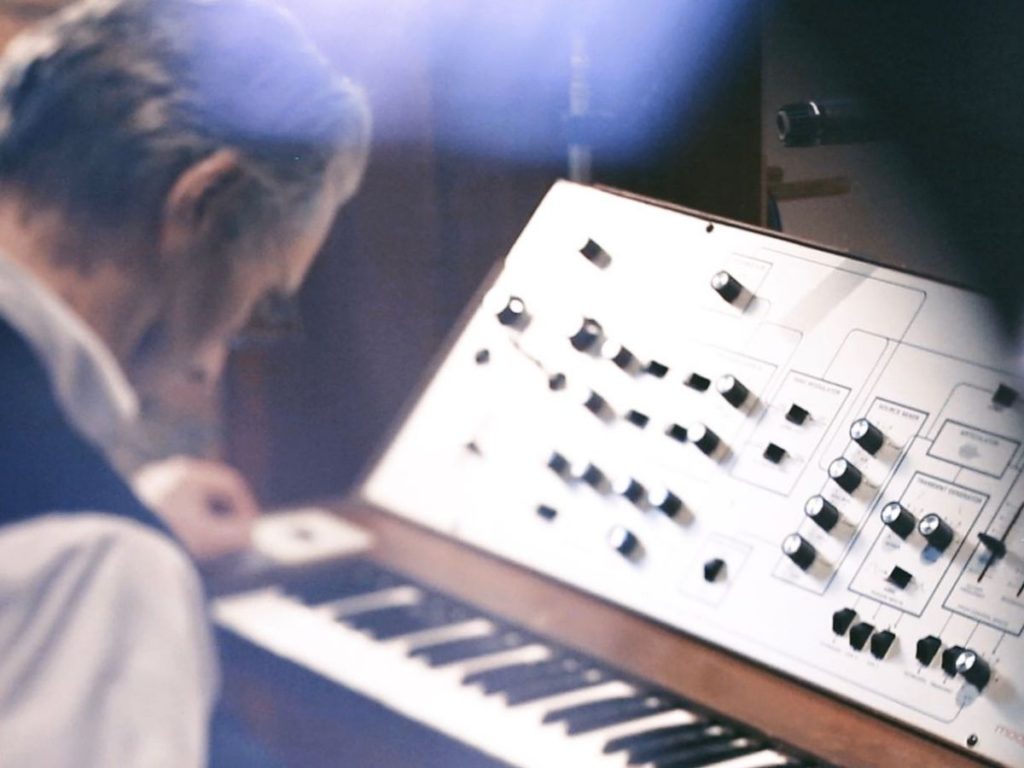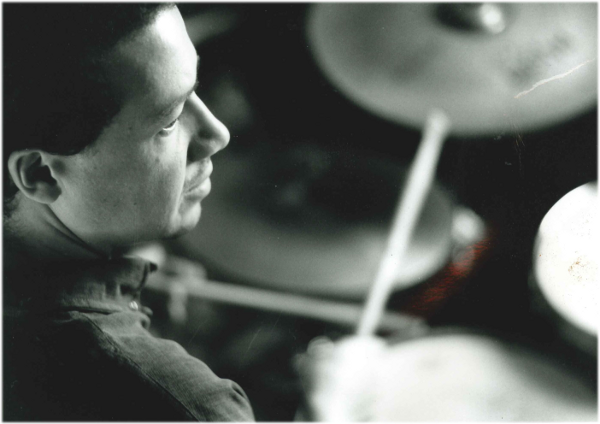Since the mid-1970s, Allen Ravenstine has experimented with and expanded on the uses of creative synthesis, perhaps most famously with Pere Ubu (and later Red Krayola), where he brought “unpredictable textures, effects and pulsating washes of sound” to the mix.
As part of Philippe Petit‘s ever-expanding Modulisme sessions, Allen contributed the one hundredth session to the series, and spoke to Freq about his practice, discoveries in synthesis and how they came about.
When did you first become aware of modular synthesis as a particular way of making music, whether as part of electronic music in general or more specifically as its own particular format, and what did you think of it at the time?
By chance in 1974 or ’75, I befriended a guy who had taken some guitar effects boxes (fuzz tones) and rewired them into oscillators. We would plug them into a stereo receiver and amuse ourselves making noise. Over time I accumulated some other units including an enveloper.At some point a guy mentioned to me that there was an instrument called a synthesizer that had all of the units in one box. I became aware of a company called Electronic Music Labs that had been contracted by the State of Connecticut to create a synthesizer that could be used by school children. That unit was the EML 200 and it had no internal patching. I bought one.
What was your first module or system?
The first module was an oscillator. The first system was the EML 200
How long did it take for you to become accustomed to patching your own synthesizer together out of its component parts?
With the 200, the only way to make a sound was to patch units together, oscillator to enveloper to filter or the like and then to a mixer and then to an amplifier. The 200 had no keyboard. There was a single button that could be used as a trigger. Control was mainly turning pots.Do you prefer single-maker systems (for example, Buchla, Make Noise, Erica Synths, Roland, etc) or making your own modular synthesizer out of individual components form whatever manufacturer that match your needs.
All of the work I did for many years was with the EML 200 and the 101. In the last ten years, I have accumulated equipment made by Doepfer, Moog, Korg, Haken, Roland, Grendel and EMW. They are all useful in their own way.
East Coast, West Coast or No-Coast (as Make Noise put it)? Or is it all irrelevant to how you approach synthesis?
I am largely unaware of what others are doing.
Do you tend to use pure modular systems, or do you bring in outside effect and devices when playing or recording?
I am not a purist. I mainly use non-modular synthesizers and software instruments.Do you find that you record straight with no overdubbing, or do you end up multi-tracking and editing tracks in post-production?
For me composing bears some resemblance to sculpting, except first I have to make the rock, then figure out what’s in the rock, then cut away everything that isn’t the thing that’s in the rock. Or, to put it another way, write the story, then take out everything that isn’t the story. I do a lot of editing. Sometimes the last track becomes the track that is the story and then everything else gets cut and I begin again.Do you pre-patch your system when playing live, or do you tend to improvise on the spot?
I don’t like live performance. Recently, I was asked to play a show with my old band Pere Ubu with whom I had not performed for thirty-five years. We had time for some rehearsal and what we did was wonderful, filled with texture and nuance. Then came the gig, and people were wound up by the presence of the audience. The adrenaline caused them to play more often and to play more loudly. All of the subtlety and nuance was lost along with it my interest in what we were doing. An audience changes everything and not for the better.
For that performance, I used the EMW 200, which is a small digital version of the EML 200. I had created a patch a week or so before the rehearsal and it was versatile enough to be satisfying. During the show as things changed, I modified it. When the band became a wall of sound, I stopped playing. I doubt that anyone noticed.Which module could you not do without, or which module do you use the most in every patch?
I’m not really working with modular units these days.
What do you think that can only be achieved by modular synthesis that other forms of electronic music cannot or makes harder to do?
I’m not in a position to answer that.
Have you used various forms of software modular (eg Reaktor Blocks, Softube Modular, VCVRack) or digital hardware with modular software editors (eg Nord Modular, Axoloti, Organelle), and if so what do you think of them?
I have not used any of the things you mention.
What module or system you wish you had?
Nothing comes to mind.Have you ever built a DIY module, or would you consider doing so?
No
Which modular artist has influenced you the most in your own music?
My influences are not people who work in electronic music. I am more likely to be influenced by a car horn or a siren that sounds outside my window when I’m working.
Can you hear the sound of individual modules when listening to music since you’ve been part of the modular world — how has it affected (or not) the way that you listen to music?
I love music, so I don’t listen to it all of the time, in fact most of the time at home the only music I hear is what I’m making. I live in New York City and there is music playing everywhere, all of the time. I find it distressing. And also infuriating that so many folks think they should be able to decide what I listen to. Silence is the rare gem, we could use a lot more of it.What have you been working on lately, and do you have any upcoming releases or performances?
I’ve written a short story and have broken it into parts. I’m making soundtracks for each part and I will narrate the story over the tracks. This will be the second one. The first was called Wallflower and it will soon be released on Recommended Records.Can you outline how you patched and performed your Modulisme session?
Philippe contacted me a while back asking if I would be interested in submitting an hour of music. What I sent him were tracks that I had finished and not used on other releases. I think I included a couple of tracks that I was working on when he approached me. Most of the time I spent on the project was related to the running order. I approach the running order as if it was a story so that it has a beginning, a middle and an end.
I remember when Waiting For The Bomb was being released and I was working with a woman who was doing the promotion, I said it made me sad to think that I had put so much effort into the running order and no one would ever sit down and listen to the album from start to finish. She laughed and said I would be lucky if people sat and listened to a whole track. That’s sad. I remember when it was common to sit in the dark and listen to a whole album, common amongst the people I knew anyway. Folks seem to have a very short attention span these day. It’s hard to imagine that that is a good thing.




 Mark Sanders has been a professional drummer for almost thirty years. His diversity is unmatched, running the gamut between jazz, free improvisation, pop, avant-rock, modern classical, dance, new complexity, dub and folk. He’s one of the few free improvisers who integrates the learning that he accumulates from these broad activities: most improvising musicians’ approach rarely synthesises or overlaps their sets of experience from other styles. You would be hard pressed to find musicians currently working within free improvisation who he hasn’t worked with.
Mark Sanders has been a professional drummer for almost thirty years. His diversity is unmatched, running the gamut between jazz, free improvisation, pop, avant-rock, modern classical, dance, new complexity, dub and folk. He’s one of the few free improvisers who integrates the learning that he accumulates from these broad activities: most improvising musicians’ approach rarely synthesises or overlaps their sets of experience from other styles. You would be hard pressed to find musicians currently working within free improvisation who he hasn’t worked with.